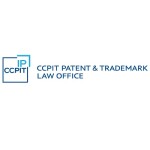MIP: How have recent decisions affected overseas commissioners’ ability to attach logos and branding to original equipment manufacturer (OEM) products?
CCPIT: Whether OEM use constitutes trademark ‘use’ is relevant to two different procedures: the non-use cancellation procedure, and trademark infringement lawsuits.
For a long time, the question of OEM trademark use has been controversial, as in the two procedures, the conclusions are sometimes contradictory. According to the HONDAKIT verdict made by the Supreme People’s Court (Honda Motor Co Ltd v Chongqing Hengsheng Group Company & Hengsheng Xintai Trading Co Ltd, 2019), the use of the alleged trademark constitutes trademark use, and the alleged trademark is likely to be exposed to the relevant public. Thus, there is a likelihood of confusion, and trademark infringement is established in this case.
Throughout the years, the SPC’s assessment has evolved from a blank exemption from trademark infringement for OEM manufacturing to a more factual and case-by-case approach. Such an approach is arguably more consistent and getting closer to the spirit of the law, given that the same OEM act may now constitute trademark use in both non-use cancellation and civil trademark infringement procedures.
In a recent verdict made by the Zhejiang High People’s Court over OEM trademark use, the JURATEK case (Laizhou Baoyi Mechanical Co., Ltd. v Suzhou Runjun Trade Co., Ltd., 2022), the claim of trademark infringement was dismissed. This was because the trademark registered by the plaintiff was filed in bad faith, and its claim of infringement based upon the improperly obtained trademark right was not supported. The court further ruled that OEM for exclusively exportation is an important foreign trade mode in China. We cannot simply say that OEM for exportation is an exception of trademark infringement, nor can we make a black and white conclusion that such use of a trademark for OEM products exclusively for exportation constitutes trademark infringement in all cases.
MIP: How does the use of manuals and brochures apply as ‘use’ of a trademark in China?
CCPIT: Genuine use of a trademark must be demonstrated by solid evidence of effective and sufficient use of the trademark on registered goods sold or produced in the market concerned.
Evidence of use should concern the place, time, extent and nature of use of the trademark for the relevant goods and services. The evidence is then evaluated in an overall assessment. Therefore, although evidence may be insufficient by itself to prove the use of trademark, it may contribute to proving use in combination with other documentation and information.
The use of a trademark on manuals and brochures can be regarded as effective trademark use if there is other relevant proof to show that such manuals and brochures are exposed to the relevant public. Through this, the relevant public can learn about the trademark attached to the products, and such use is legitimate, public and for commercial use. In practice, if the mark is not presented on evidence like invoices, especially for device marks, the manuals and brochures are usually used as supporting evidence to show how the mark is used on the goods/services. Thus, the use of manuals and brochures needs to be assessed in a case-by-case manner to determine if such use is use of a trademark.
MIP: How does the concept of ‘good faith’ affect the ‘use’ of a trademark in China?
CCPIT: The principle of ‘good faith’ should apply in all trademark procedures, including non-use cancellation or other legal proceedings involving trademark use. In the non-use cancellation procedure, the use of a trademark in good faith means that the use of trademark is genuine, instead of token use, or for the purpose of maintaining the trademark right or symbolic use to avoid non-use cancellation. Also, the use should be legitimate, which should not violate the mandatory and prohibitive provisions of the Chinese Trademark Law.
The trademark right should be obtained in good faith. According to recent judicial decisions, a trademark registered improperly should not be considered a legitimate legal right to claim protection against infringement. Good faith also means the prohibition of abuse of rights. Also, in the Zhejiang High People’s Court case regarding whether the use of the mark in OEM constitutes trademark infringement (the STAHLWERK case), as the mark “STAHLWERK” was filed in bad faith by Shenzhen Stahlwerk, the court considered that the enforcement of the trademark rights by Shenzhen Stahlwerk was against the principle of good faith and did not support its claims.












